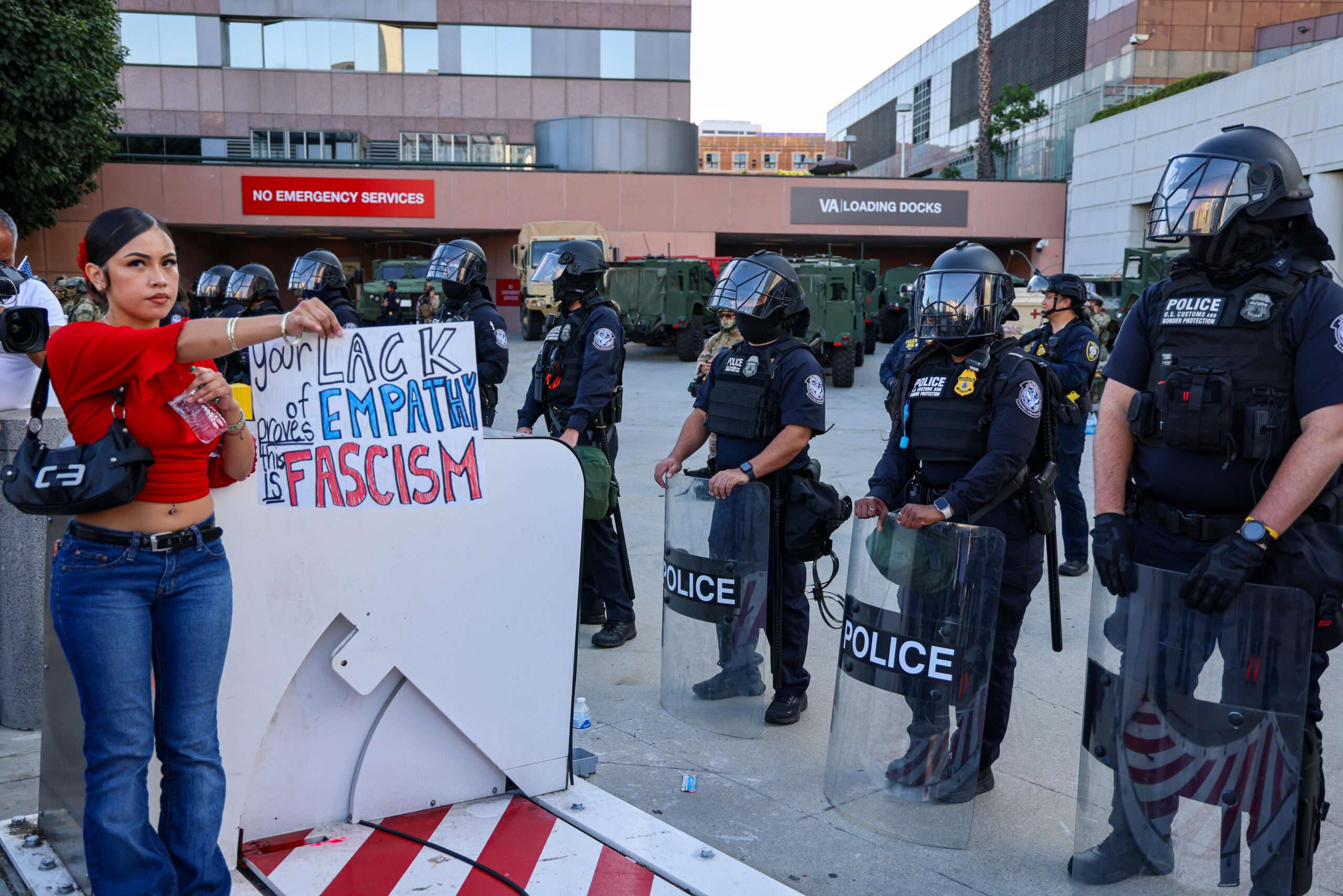Dozens of journalists have been assaulted and injured by federal and local law enforcement in Los Angeles during protests earlier this week against Donald Trump’s mass deportation program.
Press freedom groups are demanding that law enforcement stop targeting reporters covering the L.A. protests after on-air news broadcasts and cellphone video showed federal, state, and local police firing indiscriminately on crowds with pepper balls, rubber bullets, and other so-called less-than-lethal ammunition, while in other cases officers are seen firing on clearly identified members of the press.
A coalition of 28 groups including the Los Angeles Press Club, the Committee to Protect Journalists, and the American Civil Liberties Union, sent a letter to Department Homeland Security Secretary Kristi Noem on Monday “to express alarm” over the incidents and urge Noem to ensure that federal law enforcement officers uphold the First Amendment.
According to the groups, there were at least 24 documented instances of journalists being targeted by law enforcement while covering Los Angeles protests between June 6 and June 8.
“A number of reports suggest that federal officers have indiscriminately used force or deployed munitions such as tear gas or pepper balls that caused significant injuries to journalists,” the letter said. “In some cases, federal officers appear to have deliberately targeted journalists who were doing nothing more than their job covering the news.”

https://reason.com/2025/06/12/police-target-dozens-of-reporters-during-l-a-anti-ice-protests


